The dances of the Peruvian coast showcase the country's cultural and ethnic diversity, reflecting the history and traditions of the region, resulting from various cultural fusions. These dances convey emotions and stories through rhythm and color.
The typical dances of this region stand out for their energy, rhythm, and elegance, with indigenous, African, and European influences. These dances combine unique movements, music, and costumes, using traditional instruments like the guitar, cajón, and panpipes. The choreographies include spins, fast steps, etc. All reflect the stories and traditions of the region.
These dances are key to the country's cultural identity and an important tourist attraction. In addition to keeping traditions alive, they promote national pride and cultural exchange. The festivals where they are performed attract tourists from all over the world, boosting local tourism.
The Peruvian coast has a rich culture that stands out through dances that tell its history and diversity. Here are the 7 representative dances of the region.
The zamacueca, originating from the Peruvian coast during the colonial period, is the precursor to the marinera, reflecting the fusion of indigenous, African, and Spanish cultures, with lively steps and a joyful rhythm. Its sensual movements symbolize courtship and flirtation, accompanied by guitar, cajón, and cajita.
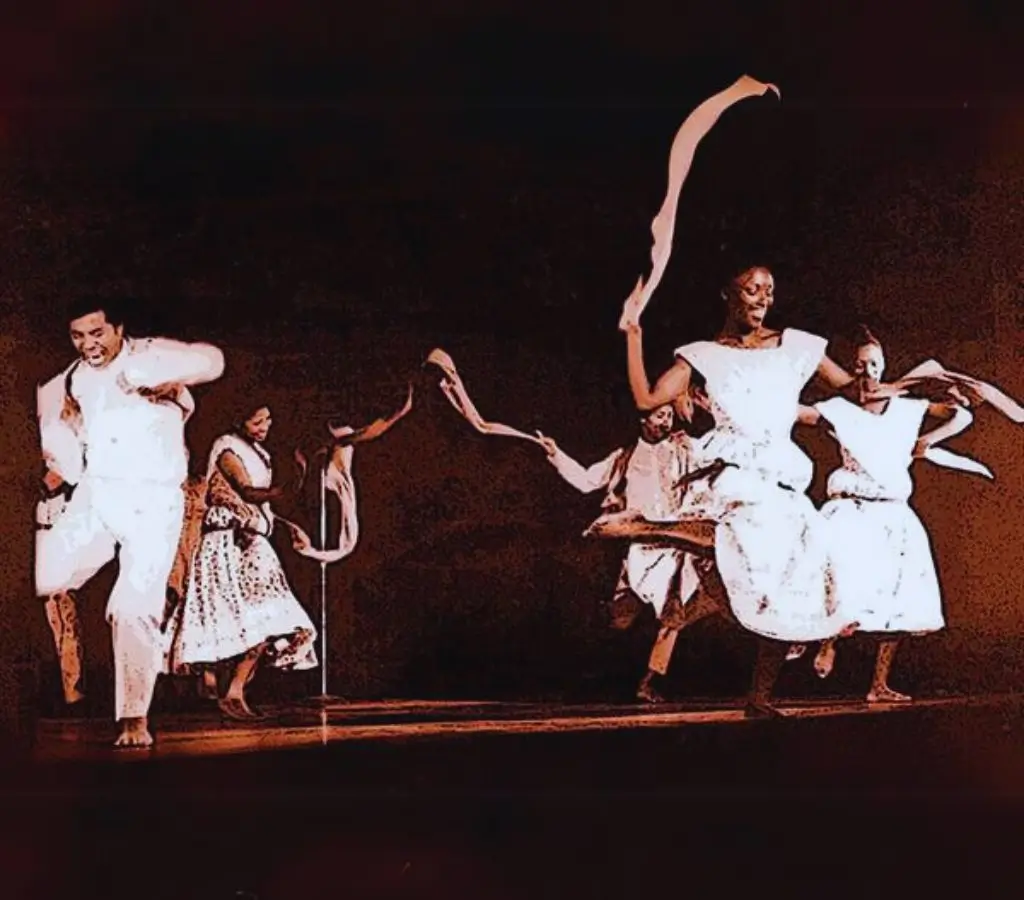
The alcatraz symbolizes courtship between the male and female albatrosses. The dancers imitate the movements of these birds with soft, undulating steps accompanied by gestures that represent their flight and love.
In addition to being an artistic expression, it highlights the connection of the Peruvian people with nature and respect for the environment. It also helps preserve local traditions and pass them on to future generations.
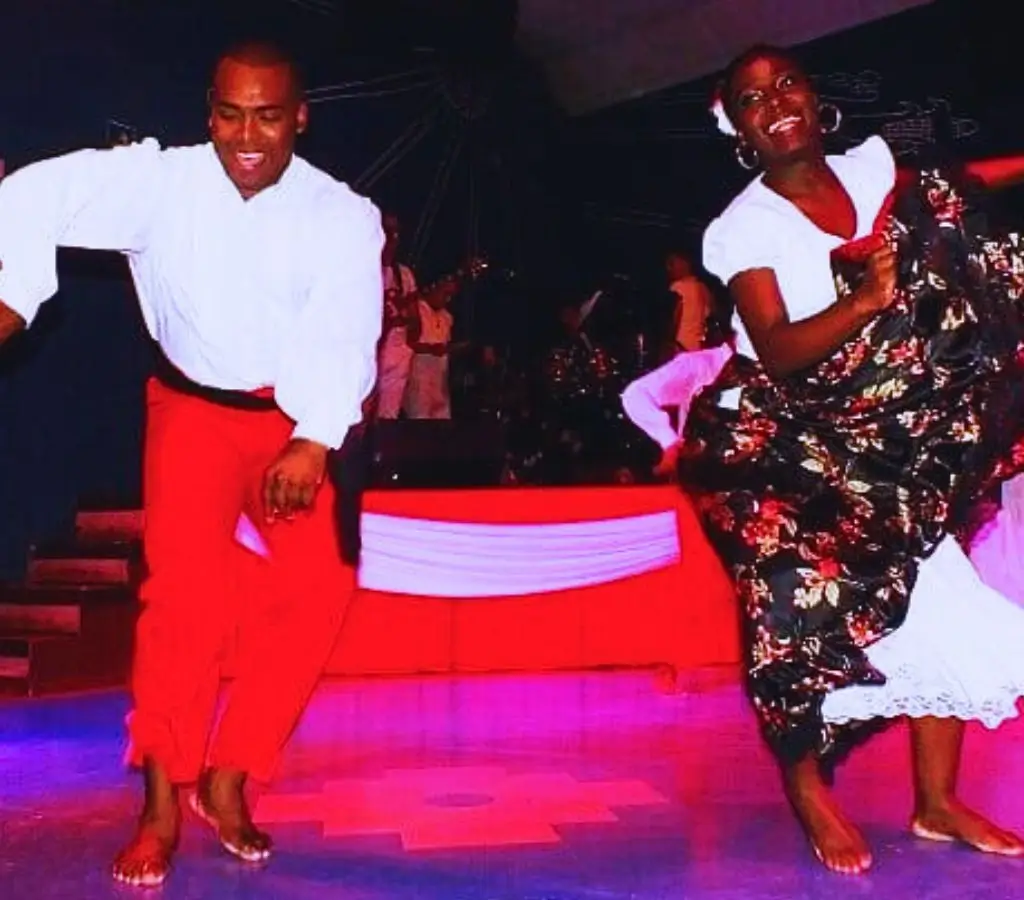
The marinera is a traditional Peruvian dance originating from Trujillo, representing courtship between a man and a woman. Its elegant and agile movements are accompanied by colorful costumes and handkerchiefs.
The cheerful music, featuring guitar, Peruvian cajón, and bells, highlights the flirtation and coquettishness. Additionally, the marinera is essential in the country's festivals, with competitions that reward the dancers' skill.
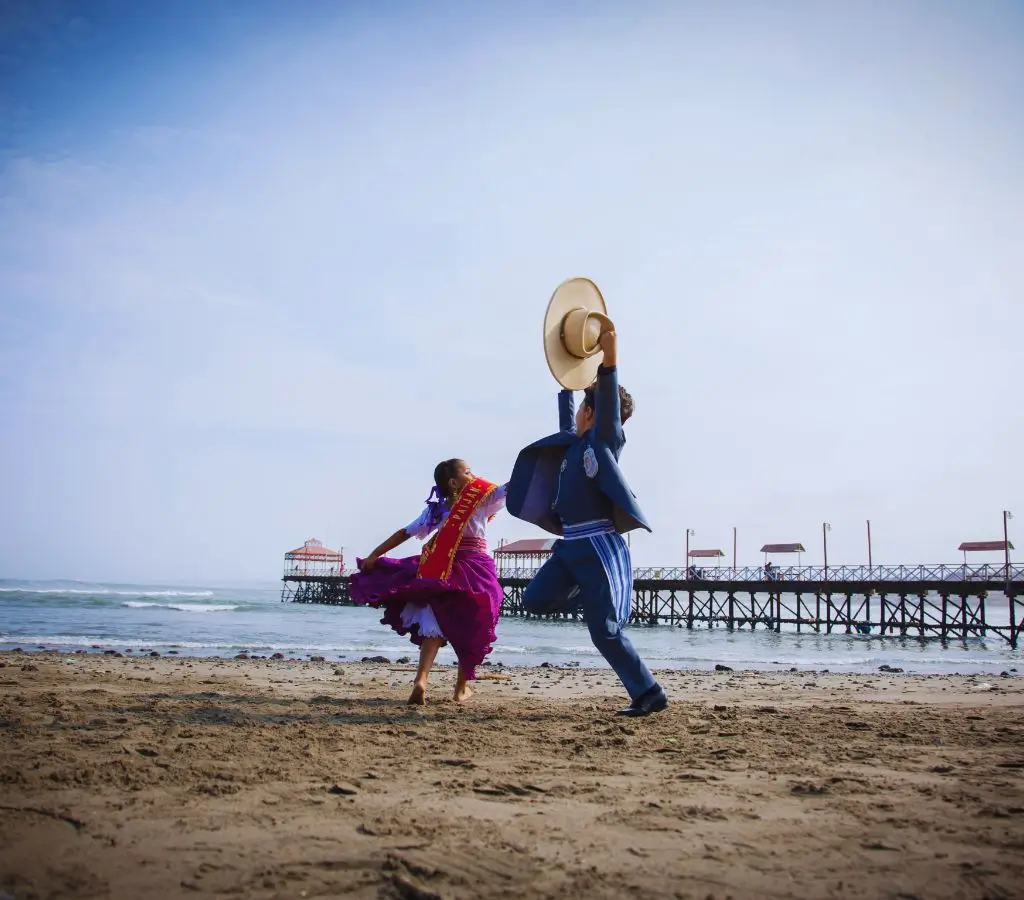
The marinera limeña is a variant of the marinera, originating from Lima. It is distinguished by its softer, more elegant movements, representing the Creole and mestizo culture of the city. It is an essential part of local festivities and celebrations.
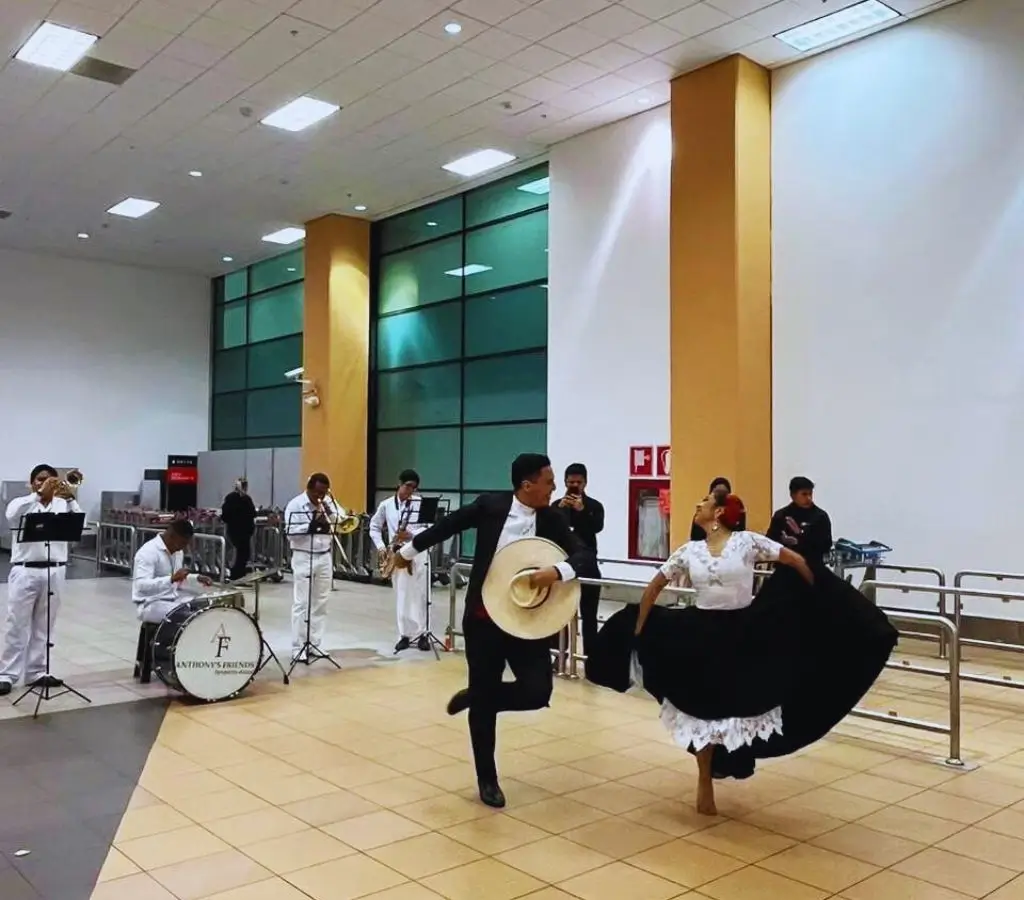
The marinera norteña, which originates strictly from Trujillo, is the most iconic dance of Peru, showcasing the flirtation between man and woman. It stands out for its fast rhythm, agile movements, and the use of handkerchiefs, accompanied by cheerful music that includes guitar, Peruvian cajón, and panpipes.
The festejo comes from the fusion of central and southern coastal influences and celebrates the identity and resilience of Afro-descendant communities. It is characterized by vigorous rhythms and energetic movements, with improvised steps to the beat of the music.
Instruments like the Peruvian cajón, maracas, and donkey jaws create a distinctive rhythm, while the foot stamping adds rhythm with expression. This dance conveys joy, vitality, and pride in Afro-Peruvian culture.
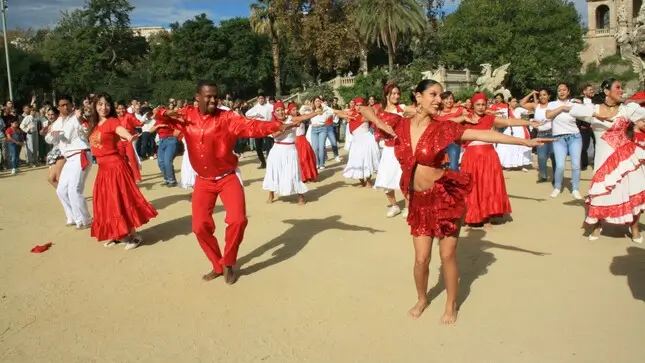
The Peruvian vals criollo blends European and local influences, creating a unique genre with romantic and melancholic melodies. Its lyrics address themes of love, nostalgia, and national identity, with instruments like guitar, violin, piano, and harp.
This dance is performed in pairs with smooth and fluid movements, showcasing romantic elegance; the Peruvian Creole waltz is very popular in Peru, especially in celebrations such as weddings and quinceañera parties.
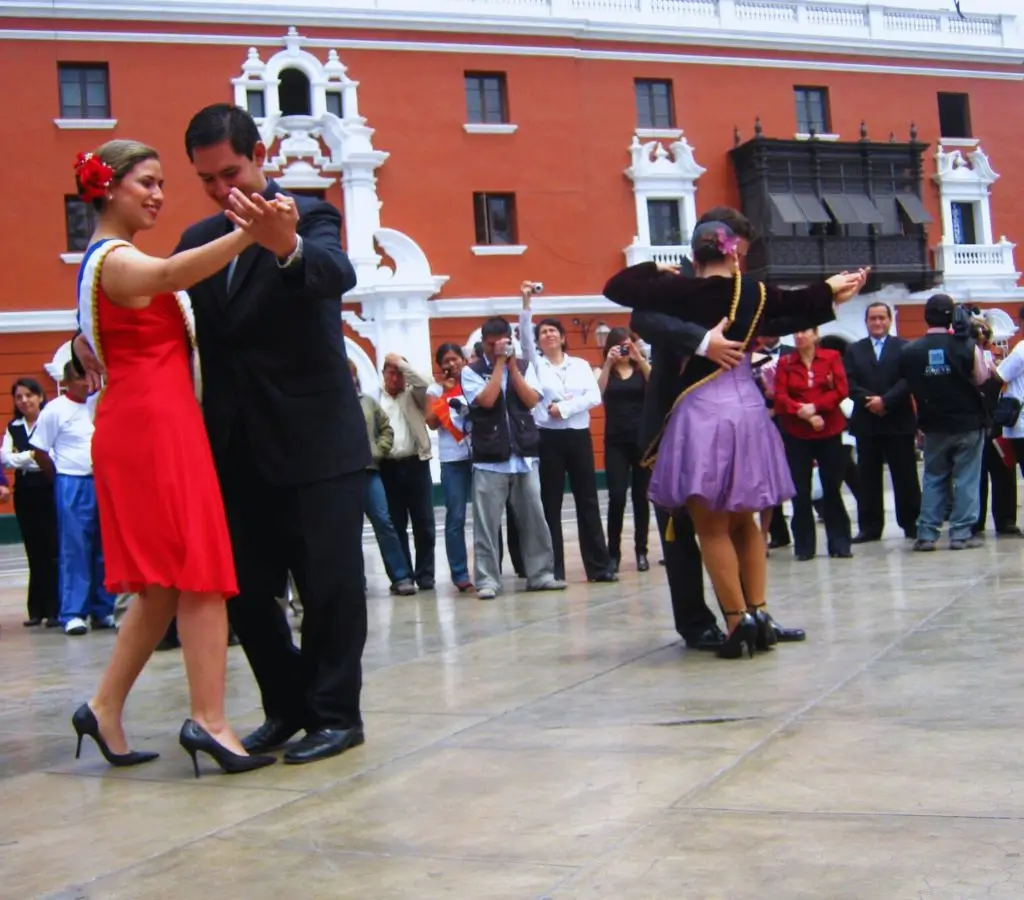
The tondero is a dance and musical genre from Peru, specifically from Piura, characterized by its cheerful rhythm, with fast and energetic movements.
Danced in pairs, it uses handkerchiefs and hats, creating a celebratory atmosphere. Instruments such as guitar, Peruvian cajón, maracas, and bells provide a vibrant and distinctive sound.
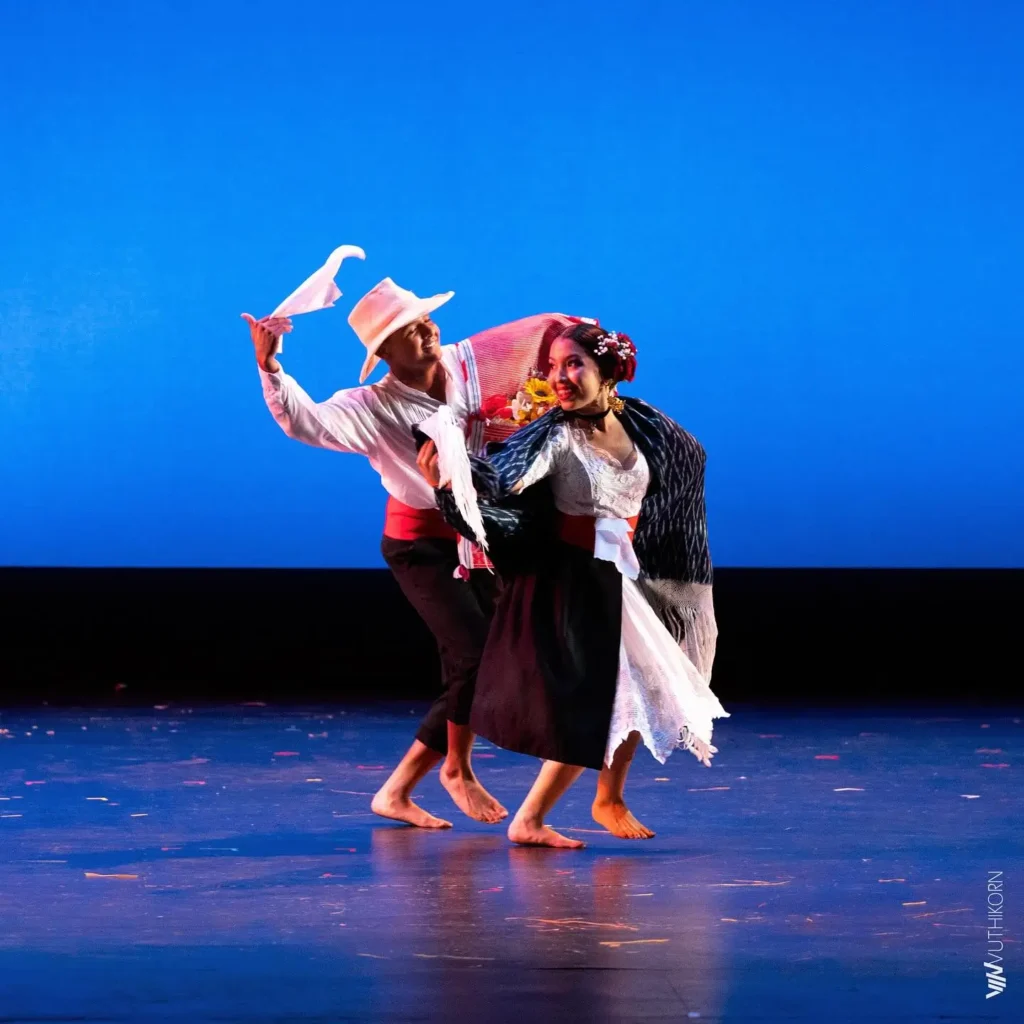
The landó is an Afro-Peruvian dance with a slow and sensual rhythm, originating from the Afro-descendant communities of the central and southern coast, reflecting African influence on Peruvian culture.
The dancers perform fluid movements with foot stomping and hip movements, accompanied by guitar and Peruvian cajón. It is considered a Cultural Heritage of the Nation and is transmitted to preserve traditions.
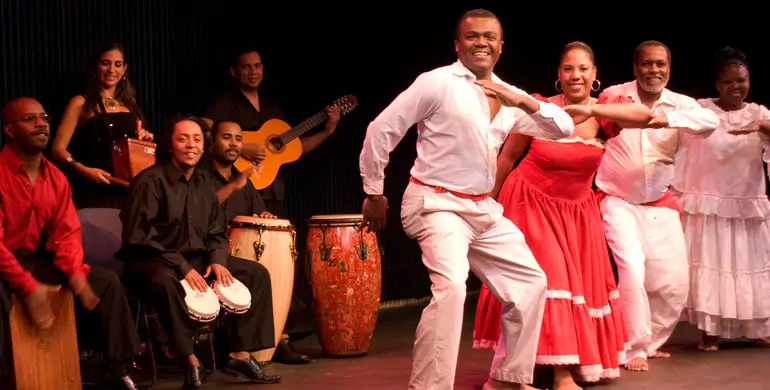
Afro-Peruvian dances are the African heritage in Peruvian identity, originating in the Afro-descendant communities of the coast; these dances blend African, Indigenous, and Spanish elements, creating a unique and vibrant style. Each dance has its own characteristics, but all are tied to Afro culture.
The Son de los Diablos is an Afro-Peruvian dance from Chincha, representing the struggle between good and evil. The dancers, dressed in colorful costumes and grotesque masks, portray the devils, while the good characters appear angelic.
With rhythmic music and energy, accompanied by drums and traditional instruments, it helps the communities keep their traditions alive and transmit their heritage to future generations.
The zapateo is a key technique in the traditional dances of the Peruvian coast, such as the festejo and zamacueca; it involves the rhythmic use of the feet to mark the beat and enrich the dance.
The dancers execute complex steps with heels, toes, and side movements, creating intricate rhythms. This dynamic element reflects the joy, passion, and vitality of the culture.
After describing the most representative dances of the Peruvian coast, we will answer the most frequently asked questions.
The most representative dances of Peru reflect its cultural diversity and history, such as the festejo, marinera, tondero, and Peruvian Creole waltz. These dances are practiced throughout the country, celebrating Indigenous traditions and African and European influences.
The marinera, which originates from the Peruvian coast, especially from Trujillo, is the most representative dance, showcasing elegance and courtship.
It stands out with its agile movements and colorful costumes, reflecting the Creole and mestizo culture of the Peruvian coast. It is key in festivals such as Independence Day and Marinera Day, where competitions and public performances are held.


